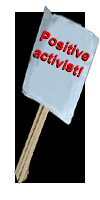There appear to be two major causes of heel pain: heel spurs and plantar fasciitis. Other causes are listed in the table below. A heel spur is a bony growth on the underside of the heel bone. The spur, visible by X-ray, results from stretching of the long band of tissue that connects the heel and the ball of the foot. Both heel pain and heel spurs are frequently associated with inflammation of the band of tissue running along the bottom of the foot, from the heel to the ball of the foot. The inflammation is called plantar fasciitis and can be quite painful. The condition occurs when the plantar fascia flattens out and elongates beyond its normal extension, causing the fascia to tear at various points along its length, including at the heel bone. I have the latter, plantar fasciitis. I am ready to cry (I have been in reduced activity mode for the last five months after straining a ligament in my neck at gym, and I have a road race coming up at the beginning of March, for which I need to start training).
|
The following from The American Family Physician website - a fantastic resource.
The disorder classically presents with pain that is particularly severe with the first few steps taken in the morning. In general, plantar fasciitis is a self-limited condition. However, symptoms usually resolve more quickly when the interval between the onset of symptoms and the onset of treatment is shorter. Many treatment options exist, including rest, stretching, strengthening, change of shoes, arch supports, orthotics, night splints, anti-inflammatory agents and surgery. Usually, plantar fasciitis can be treated successfully by tailoring treatment to an individual's risk factors and preferences.
Resting provides only temporary relief. When you resume walking, particularly after a night's sleep, you may experience a sudden elongation of the fascia band which stretches and pulls on the heel. As you walk, the heel pain may lessen or even disappear, but that may be just a false sense of relief. The pain often returns after prolonged rest.
Treatment
In general, plantar fasciitis is a self-limiting condition. Unfortunately, the time until resolution is often six to 18 months, which can lead to frustration for patients and physicians. Rest was cited by 25 percent of patients with plantar fasciitis in one study as the treatment that worked best.
The major issue is the healing time. I have had this condition before when I ran a lot more than I do now. It did take a very long time to heal.
The treatments described by The American Family Physician include:
And these are just to speed that extremely long 6 to 18 month recovery time.
Bollocks. I am getting old and the body is creaking.

No comments:
Post a Comment